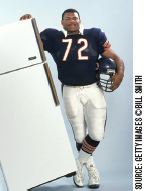The National Institute of Standards and Technology was founded 118 years ago
this month, originally as the National Bureau of Standards. Headquartered in
Gaithersburg, Md., NIST has made a huge contribution to the development of refrigeration technology in that time, not least through the development of their reference properties software, known as “Refprop.”
This tool has guided countless thousands of researchers through the development of new products and systems working with a bewildering range of new fluids and has also contributed greatly to the re-invention of systems with traditional refrigerants like ammonia and carbon dioxide, now being used in a variety of novel configurations.
However, the household refrigerator is much older than NIST although it comes from the same neck of the woods. In 1802 a farmer called Thomas Moore, from Brookeville, Md., built a portable box for transporting his butter to market in Georgetown, Washington, D.C. His box was made of cedarwood and contained a rectangular tin pan, large enough to contain 22 one pound blocks of butter. The gap between the tin pan and the wooden casing was packed with small chunks of ice and the outside was lined with rabbit fur and hessian cloth.
Moore called his invention a “refrigerator”—the first time this word had been used for something this small. I was interested to find that Brookeville is only a 20 minute drive east of Gaithersburg and the distance Moore travelled to market (on horseback) is about twice as far. Moore patented his box in 1803 but, although there are contemporary descriptions of it, all copies of the patent have been lost—the official copy in a fire at the U.S. Patent Office in 1836 and the family’s copy in a fire at their home in 1945.
Difficult to make any impression on it
Moore, being a good farmer, was very focused on the economics of his invention. He estimated the cost of construction to be about $4 and noted that he was able to sell his butter, which was “so hard that it was difficult to make any impression on it with the finger,” at a premium of about 5 cents per pound. With a payload of 22 pounds, he said
that “four times using it paid the cost.”
Moore showed a remarkable degree of philanthropy in his enterprise. In his essay of 1803, “A Description of the Newly Invented Machine Called the Refrigerator,” he wrote, “Any person will be at liberty to use gratis, for the purpose of carrying butter to mark market, one Refrigerator of a size not exceeding 730 cubic inches in the clear.” “For one of any other size not exceeding a cubic foot… the price proposed for a permit is 2 dollars 50 cents. For one of any larger size… 5 dollars.”
He then added the footnote “if any person in low circumstances wishes to use any of the above mentioned sizes for the purposes of marketing only; and who cannot well afford to pay for the privilege; he may, on producing a certificate signed by three reputable neighbors certifying that such are his circumstances, obtain a permit gratis.” We can learn as much from his art as from his science
Download the full article as it appears in the ASHRAE Journal here:
This article was published in ASHRAE Journal, March 2019. Copyright 2019 ASHRAE. Reprinted here by permission from ASHRAE at www. star-ref.co.uk. This article may not be copied nor distributed in either paper or digital form by other parties without ASHRAE’s permission. For more information about ASHRAE, visit http://www.ashrae.org.

